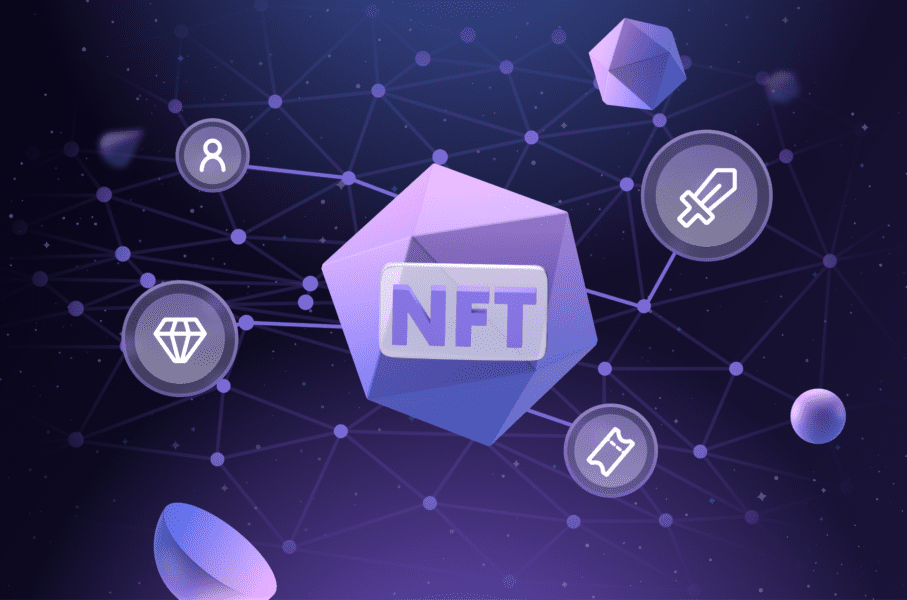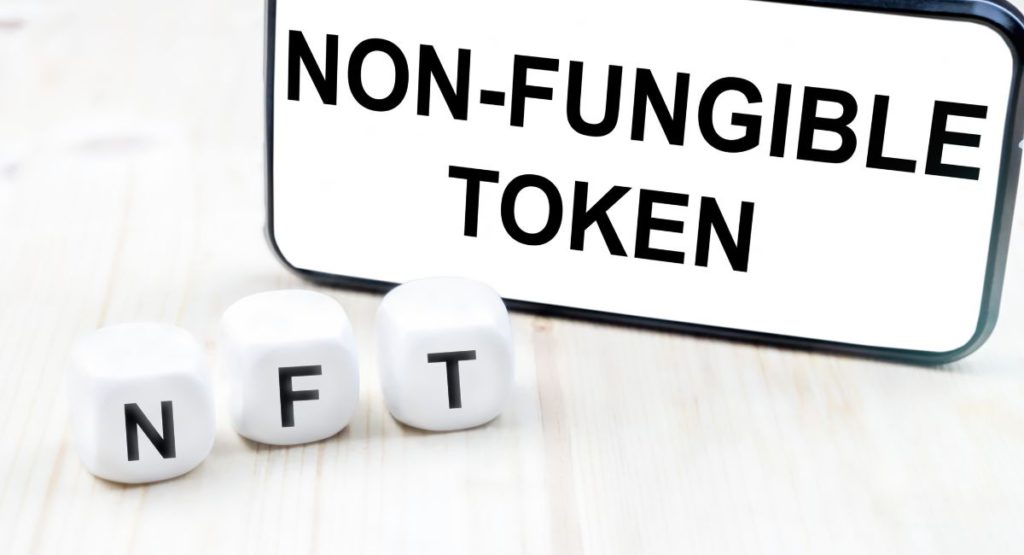The Power of Storytelling That Leads To Compelling NFT Narratives

In the realm of Non-Fungible Tokens (NFTs), where digital art, music, collectibles, and virtual real estate find their home, one often-underestimated element plays a pivotal role in an NFT’s success: storytelling. NFTs aren’t just about unique digital assets; they’re about the stories and emotions attached to them. This article explores the profound influence of storytelling in the NFT space and provides insights into crafting compelling NFT narratives.
The Story Behind the NFT Narratives Art
Every NFT has a story, whether it’s the digital art created by a talented artist, a piece of music composed by a musician, or a virtual real estate project. These stories go beyond the technicalities of blockchain technology and delve into the inspiration, creative process, and the message or emotion the creator wants to convey.
When an NFT artist or creator shares the story behind their work, they invite the collector or buyer to connect with it on a deeper level. Understanding the journey, motivation, and intention behind the creation makes the NFT more than just a digital file; it becomes a piece of the artist’s soul, a snapshot of their creative evolution.
The Emotional Connection
In a world where physical presence is not a requirement, NFTs can evoke strong emotional connections. This is where storytelling becomes a powerful tool. A well-crafted narrative can make a collector feel the artist’s joy, struggle, or vision. It can transport the viewer to the moment the artwork was conceived or the feeling the musician wanted to convey. This emotional connection is a driving force behind NFT sales and collections.
The Origin Story
The journey of an NFT, from inception to creation, holds the key to its uniqueness. Origin stories can captivate the audience’s imagination. For example, when Beeple, a digital artist, sold his NFT artwork for $69 million, the story of his 13-year artistic journey and his commitment to creating daily digital art pieces made the NFT’s value not just about the artwork itself, but the narrative behind it.
Scarcity and Rarity Narratives
NFTs derive their value from scarcity and rarity. Scarcity is often a technical feature, such as the limited number of tokens created. However, crafting a narrative around why an NFT is rare or scarce adds depth and appeal. Narratives of “one-of-a-kind” creations, limited edition releases, or NFTs tied to specific events can make collectors feel privileged to own a piece of the story.
Interactive and Multilayered Stories
Some NFTs go beyond a static narrative. They may involve interactive elements or multilayered stories. For instance, an NFT art piece could include unlockable content that reveals more about the artist’s process, or a music NFT could grant access to a virtual concert or behind-the-scenes content. These interactive and evolving narratives keep collectors engaged and invested.
Community-Building Narratives
Narratives can also extend to the community. NFT creators who engage with their audience, involve them in the creative process, or acknowledge their contributions build stronger connections. These community-building narratives transform collectors into active participants in the ongoing story of the NFT project.
Documentary and Documentation Stories
In some cases, the documentation of an NFT’s creation process becomes a valuable story in itself. Documentaries, videos, or behind-the-scenes content that show the artist’s dedication, struggles, and triumphs can become an integral part of the NFT narrative.
Discover the limitless potential of NFT’s in gaming with:@burnghostgames & @Mittaria_Origin
🎁 WL spots up for grabs for BurnGhost’s upcoming low-supply, FREE mint!
1️⃣ Follow @InfernoLabs_ and the panel
2️⃣ Like & RT
3️⃣ React with 🔥
https://t.co/TsL7o2viVU— Inferno Labs (@InfernoLabs_) October 29, 2023
Challenges and Caution Of NFTs

Storytelling in the NFT space is a double-edged sword, and as much as it can elevate an NFT’s value and appeal, it also presents various challenges and necessitates caution. Here are some of the key considerations:
1. Effective Communication of Vision:
Not every artist or creator is naturally skilled at communicating their creative vision effectively. Crafting a compelling narrative requires the ability to convey the essence, inspiration, and emotions behind an NFT. Artists may struggle to find the right words or visuals to represent their work, potentially hindering their storytelling efforts.
2. Overhyping and Overselling:
One of the significant risks associated with NFT storytelling is the temptation to overhype or oversell an NFT. While a well-crafted narrative can boost an NFT’s value, exaggerating or making false claims can lead to disillusionment among collectors. Authenticity and honesty in storytelling are paramount. Collectors can often sense when a narrative is being artificially inflated, and this can harm an artist’s reputation.
3. Balancing Privacy and Transparency:
Sharing the story behind an NFT often involves a delicate balance between privacy and transparency. While collectors appreciate insights into the creative process and personal anecdotes, some artists may hesitate to reveal too much about their lives. Striking the right balance can be challenging, as sharing too much personal information can lead to privacy concerns, while revealing too little may leave collectors feeling detached from the narrative.
4. Sustainability of the Narrative:
Once an NFT narrative is established, sustaining it over time can be a challenge. Artists and creators need to consistently engage with their audience, provide updates, and evolve the story to keep it fresh and engaging. Failure to do so may lead to a loss of interest and a diminishing connection between the NFT and its audience.
5. Navigating the Competitive Landscape:
The NFT space is incredibly competitive. With numerous artists and creators vying for attention, it can be challenging to stand out with a unique and compelling narrative. Crafting a story that differentiates an NFT from the multitude of others is a creative and strategic challenge.
6. Authenticity and Genuineness:
Authenticity is the cornerstone of effective NFT storytelling. Collectors are drawn to narratives that feel genuine and resonate with the artist’s true emotions and experiences. Forcing a narrative or attempting to manufacture a story that doesn’t align with the artist’s reality can be detected by the audience and result in a loss of trust.
7. Managing Expectations:
Overpromising in an NFT’s narrative can lead to unrealistic collector expectations. When collectors feel that an NFT will provide something extraordinary or life-changing based on the narrative, they may be disappointed when the reality falls short of their expectations. Managing these expectations is a delicate balance.
NFT storytelling offers immense potential for artists and creators, it’s not without its complexities and risks. Artists should strive to communicate their vision effectively while being cautious about overhyping or misrepresenting their work. Authenticity, transparency, and the ability to adapt and sustain a narrative are crucial elements in ensuring that the storytelling process is a genuine and valuable asset for both creators and collectors in the NFT space.
In conclusion, the power of storytelling in the NFT space cannot be overstated. It transforms digital assets into emotional connections, unique stories, and cultural phenomena. Whether it’s the story behind the art, emotional connections, origin stories, or interactive narratives, the ability to craft compelling NFT narratives enhances the value and allure of these digital creations. As NFTs continue to reshape the art and collectibles landscape, it’s clear that the stories they carry are as valuable as the assets themselves.
Also, read – Top 10 Influential People In The NFT Space
FAQs about NFT narratives
1. What is an NFT story?
An NFT story refers to the narrative or backstory associated with a Non-Fungible Token. It’s the story that accompanies a unique digital asset, whether it’s a piece of digital art, music, virtual real estate, or any other collectible in the NFT space. This story explains the inspiration, creative process, and the emotions or message behind the NFT, enriching its value by providing context and a deeper connection for collectors.
2. How do you write a story behind an NFT?
Crafting a story behind an NFT involves several key steps:
- Identify the Inspiration: Begin by reflecting on what inspired the creation of the NFT. Was it a personal experience, a message you want to convey, or a particular emotion you aimed to capture?
- Describe the Creative Process: Share insights into how you brought your idea to life. Discuss your tools, techniques, and the challenges you faced during the creative journey.
- Emotional or Conceptual Context: Explain the emotions, concepts, or themes embedded in your NFT. What do you want your audience to feel or understand when they engage with your creation?
- Personal Connection: Offer a glimpse into your personal connection to the NFT. Share your own experiences or what the piece means to you.
- Engage the Audience: Craft your story in a way that engages the audience. Use vivid language, convey your passion, and create a narrative that captivates and resonates with potential collectors.
- Stay Authentic: Ensure your story is authentic and genuine. Authenticity is vital for building trust with your audience.
3. What does NFT mean?
NFT stands for Non-Fungible Token. It is a digital asset that represents ownership or proof of authenticity of a unique item or piece of content, often stored on a blockchain. Unlike cryptocurrencies such as Bitcoin or Ethereum, NFTs are non-interchangeable and are indivisible, making each NFT one-of-a-kind. NFTs have gained popularity for their use in the digital art, music, gaming, and collectibles industries.
4. Can writers use NFT?
Yes, writers can use NFTs to tokenize their work, whether it’s in the form of digital books, poetry, essays, or other written content. NFTs are not limited to visual or auditory art; they can represent ownership of any digital item, including text-based creations. By tokenizing their work, writers can provide collectors with proof of authenticity and ownership of a unique digital piece. NFTs can also offer new revenue streams and opportunities for writers to monetize their content directly, potentially reshaping the publishing industry in the digital age.




























































